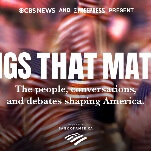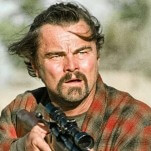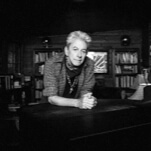“We all feel sad, Big Bird”: When Sesame Street confronted death

Will Lee was a Brooklyn-born Broadway actor who appeared in movies by Nicholas Ray, Howard Hawks, and Sidney Lumet. He served during World War II, putting on shows for the troops. He was blacklisted for five years in the 1950s for being an uncooperative witness in front of the House Committee On Un-American Activities.
And when he died, on December 7, 1982, he made Big Bird very, very sad.
No matter Lee’s previous credits, he will best be known as Mr. Hooper, the curmudgeonly Sesame Street grocer with a soft spot for the birds on his block. Mr. Hooper was one of the four original humans to take up residence on Sesame Street. His death, at the age of 74 from a heart attack, was certainly not welcome, but it provided Sesame Street with one of its greatest teaching opportunities: how to explain death to children. “I think it was one of the best things we ever did,” Caroll Spinney, the man inside the Big Bird costume, has said about “Farewell, Mr. Hooper,” in which his yellow, feathery alter ego learns that his friend will not be coming back to make him birdseed milkshakes.
Mr. Hooper’s death was revolutionary because of its frank discussion of a complicated subject that does not fit squarely into the box of children’s entertainment. “Farewell, Mr. Hooper” was ultimately the entire mission of the series boiled down into one episode. It defined what Sesame Street was for most kids: using everyday moments—be they silly or sad—as teachable ones, without being patronizing about the subject matter. Sesame Street had enough confidence in its audience to learn from the scenario they presented, even if that audience was still learning its ABCs. If vaguely Eastern European royalty could teach kids to count or a woolly mammoth could teach them about imagination, what was stopping Big Bird from allowing them to understand death?
“Farewell, Mr. Hooper” became a hallmark for Sesame Street, winning accolades and awards, including a Peabody and a Daytime Emmy. Death was not the only difficult subject Sesame Street dealt with; the show has also tackled hurricanes, divorce, and parental incarceration. But “Farewell, Mr. Hooper” set the precedent for tacking those topics. The episode’s importance was reiterated in the Internet age. In the wake of the tragedy at Sandy Hook Elementary School in 2012, experts implored parents to tell children “the truth, in their language.” Sesame Street had done just that 29 years earlier, and the five-minute clip resurfaced throughout the Internet, ostensibly as a guide for parents to teach their children about, but also as a source of comfort during a particular difficult and confusing time for everyone, regardless of age.
“Farewell, Mr. Hooper” aired on November 24, 1983, Thanksgiving Day. It was a coincidence that the episode took place on a holiday, but it also allowed more parents to watch with their children so they could field any questions. When Lee died, he had already shot several episodes set to air in 1983, so his absence did not have to be immediately explained. Options were bandied about to explain why Mr. Hooper would no longer be sweeping his stoop in the episodes to come: tell the kids he retired and moved to Florida, go the Bewitched-route and replace him with another actor, or simply not mention Mr. Hooper’s absence from Sesame Street at all. But if Sesame Street could teach a kid about the world without those same kids have to leave their living rooms, it would be a disservice to its audience to skip the aspects of that world that don’t make for a fun sketch. Executive producer Dulcy Singer pushed against the non-discussion of the absence of a character many children counted as a regular presence in their lives. “If we left it unsaid, kids would notice,’’ Singer told the Associated Press in 1983. ‘’Our instincts told us to be honest and straightforward.” It wasn’t the popular decision. “[Singer] got a lot of negative reaction from her superiors at the time,” Sonia Manzano said, who has played Maria on the show since 1971.
So instead of pretending that Mr. Hooper had decamped to Boca, the writers of Sesame Street got together with child psychologists to look at how kids view death, boiling down their specific grieving process into bullet points they addressed during the episode. What they learned is reflected in then-head-writer Norman Stiles’ script. Other scenes in the episode subtly hint at the centerpiece scene in which Big Bird must deal with the reality of death, especially the importance of expressing emotions: Forgetful Jones feels happy but he doesn’t remember why, Ernie performs in a feelings pageant representing love, Bert loses his paperclip collection and feels angry and sad. To symbolize the circle of life, Big Bird meets a new baby on the block.








































